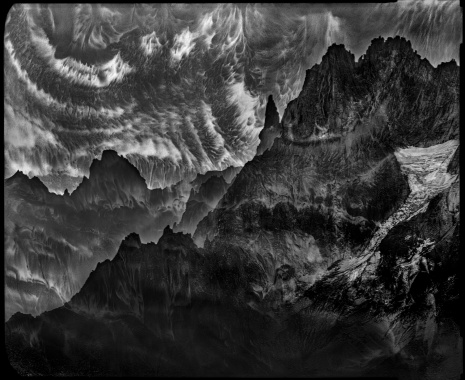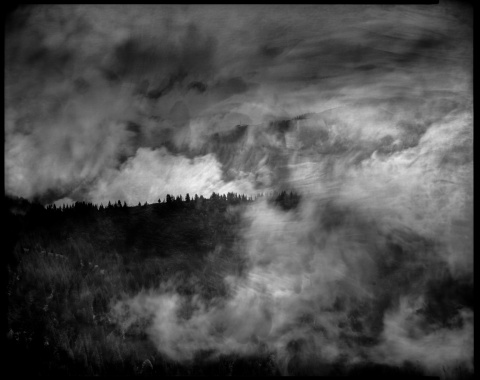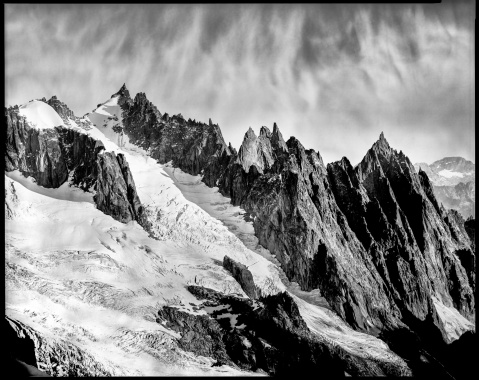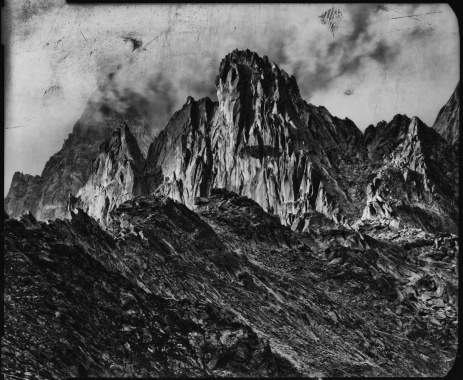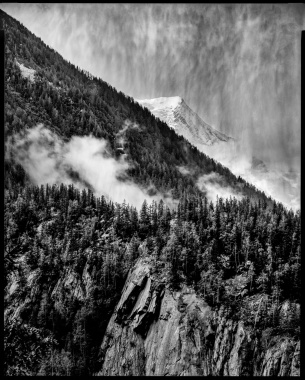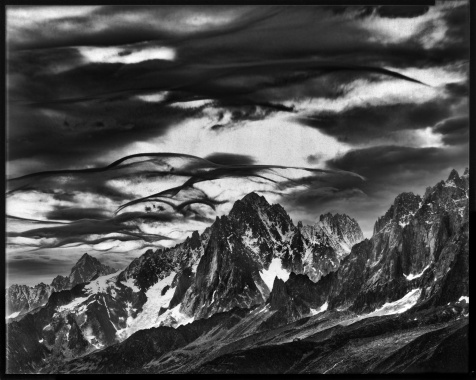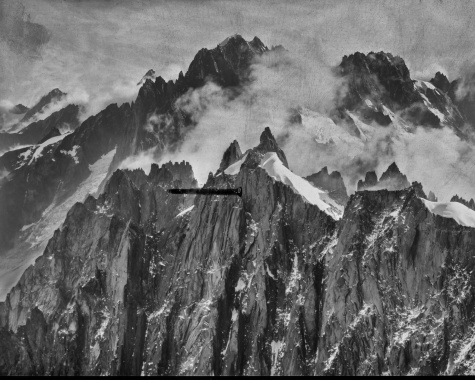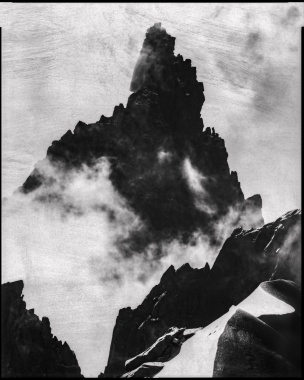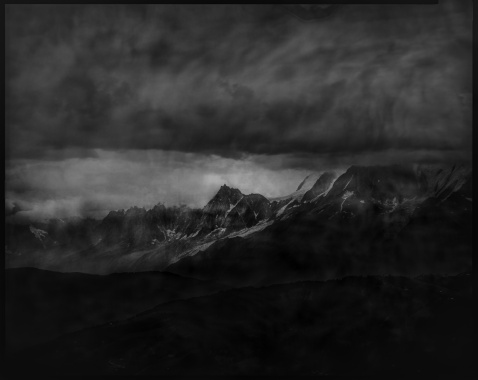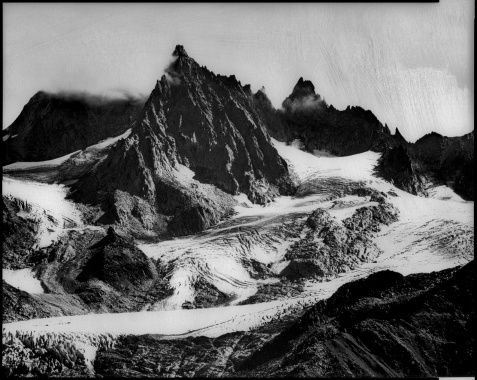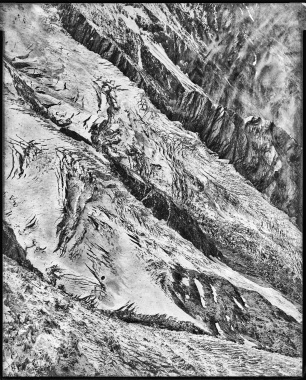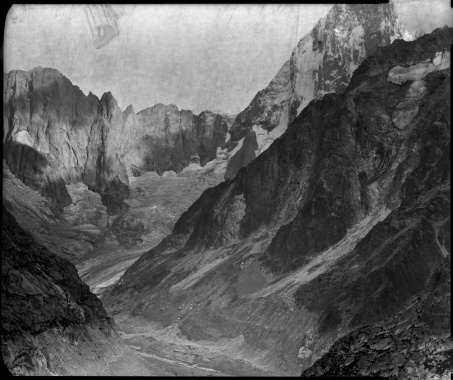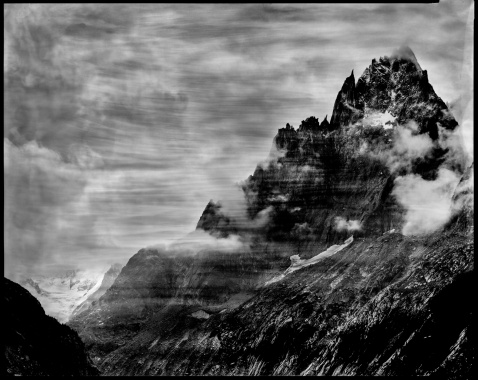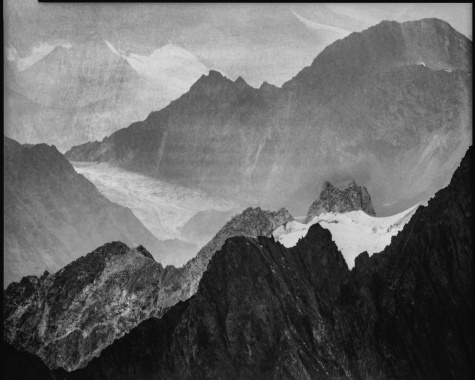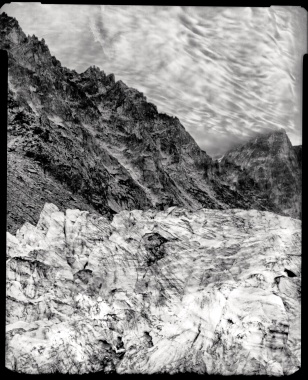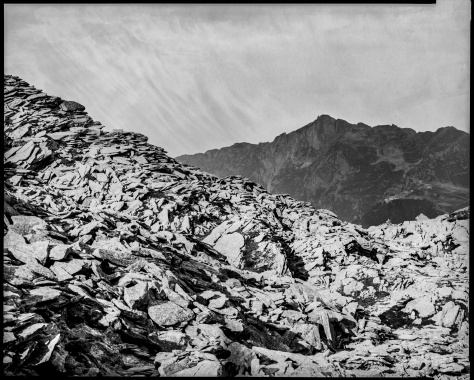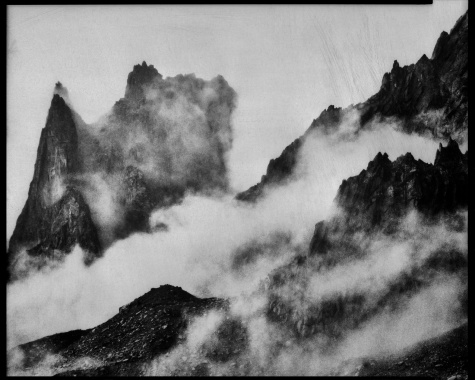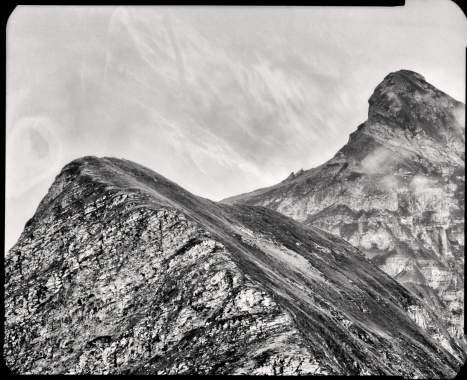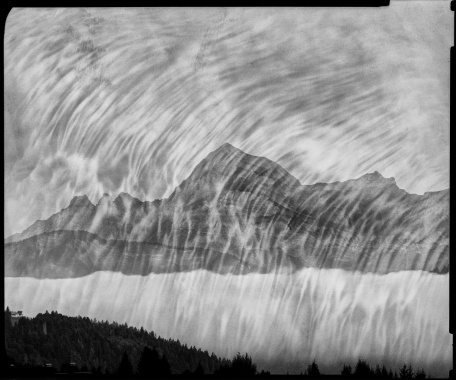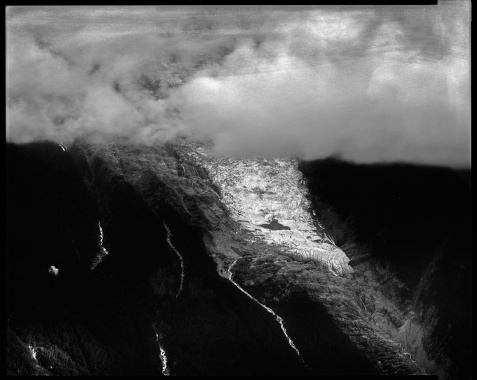Eric Bouvet: Elevations
Mountains, glaciers and, unexpectedly, a nail: with pictures created using a large-format camera and a process based on a historical technique from the 19th century, the photographer sees his series as a homage to the early days of photography. Compared, however, to historical photographs of French alpine landscapes, this series is not only about the sublime beauty of the mountains; it is also about changes taking place there in the present.
After decades working all over the world as a photojournalist, Bouvet began using large-format cameras over ten years ago. As he explains, “It was about reinventing myself. So I turned towards large-format which, due to the weight of the equipment and a certain type of archaism, implies more consideration while working and preparing the shot. Large format obliges me to take on the challenge to slow down the pace, and deal with the constraints.” He adopted this approach for the series taken in the French Alps. Applying this technique, he works with a number of 8×10 inch cameras, including the Linhof Technika 4×5 inch he uses today. Considering that he is always alone, and climbs to 3,000 metres above sea level, the weight of the gear is a constant challenge. Speaking of the significance of using a specialised camera in the mountains, Bouvert asserts, “It’s about drawing close to the elders – the 19th century photographers who used this equipment.”
“I place myself at a very precise location, at a specific time. I wait patiently for the right compilation of elements. I don’t just take a photograph: I compose with what I’m given. In the mountains, this means the unchangeable elements that have been there since forever, and will remain forever.”
The rest of the travel gear with which the photographer often sets off for days at a time, is more modern and clearly more practical; furthermore, Bouvet works with 21st century post-processing techniques. He uses the papers that have been directly exposed in the mountains as negatives, which he then scans and processes, to achieve a result that is close to what he saw when taking the shot. “For a photographer who never wanted to process his pictures in post-production, it’s a bit absurd,” he admits. “But, in this case, it’s necessary. I expose and I develop with the aim of producing a very gentle result, and to preserve as much information as possible on the negative. Working with paper is often a high-contrast process, with blacks blocked by the light. It's not always easy to expose and process. The whole process is very involved, and not without surprises, which can emerge while taking the picture, or can be affected by temperature and wetness.”
The fact that there are surprises – ones not defined by the difficulties of working in the mountains or the darkroom – is revealed in the most unusual motif in the series: the outline of an old nail appears in the middle of Mont Blanc. It is not in the camera, nor was it in the developing tray. This can only mean that the ghost nail was already recorded during the manufacturing of the paper. The fact that we are talking about a classic paper, available everywhere, makes this unlikely detail seem even stranger. “What an irony!” Bouvet exclaims. “It’s just like my life as a photographer – marked by the improbable and the absurd.” The Frenchman will continue working on this series, and it will be interesting to see what additional surprises are in store.
Bouvet’s project was proposed by Gary Knight, who was among this year’s 60 international LOBA nominators.
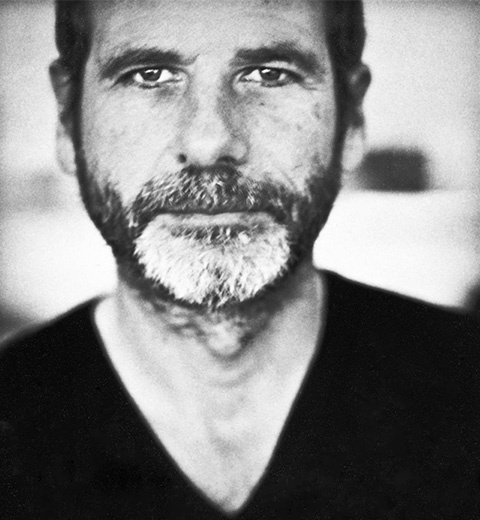
Eric Bouvet
Born in Paris in 1961, Bouvet studied Art and Graphic Design at the École Estienne in Paris. He began his photographic career working for the Gamma Agency in the eighties; and, since 1990, he has travelled the world working as a freelancer in crisis regions. His photography has received numerous distinctions, including five World Press Awards and two Visa d’Or Awards. Since 2011, he has been working on documentary projects, using large-format cameras. Bouvet lives in Paris and Saint-Jean-de-Luz in the Basque region.
Portrait © Cerise Bouvet
